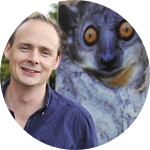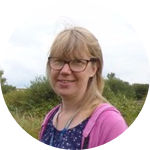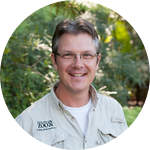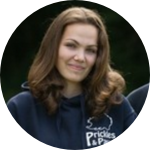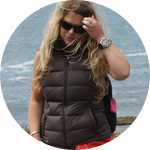About This Project
To function, tortoises must get heat from their environment. Zoos in temperate zones usually provide them with heat lamps. Infrared images show that heat lamps warm the shell surface, but raise core body temperature less well. This project will use thermal imaging cameras to compare the effectiveness of different external heat sources in warming tortoises. The results will determine the heat sources to be installed in the new tortoise house being built at Newquay Zoo. Endorsed by BIAZA.
Ask the Scientists
Join The DiscussionWhat is the context of this research?
This project was inspired by the image of a radiated tortoise Geochelone radiata under a heat lamp (see Additional Information below). This endemic Madagascan tortoise is Critically Endangered {1} {2}) and in 2014 no zoo births were reported {3}, suggesting lack of suitable breeding conditions. Radiated tortoises experience average temperatures of 22-27°C in the wild {2}, but there are few other relevant studies. The most recent (2009 {4}) contrasted patterns of natural v. artificial warming and contains images similar to that inspiring this project, emphasizing the importance and generality of the topic. As Newquay Zoo plans to redevelop their tortoise house, our infrared expertise and equipment can identify the most effective heating for the new building.
What is the significance of this project?
Surprisingly little is known about how captive tortoises control their body temperature by using heat sources in their enclosure. Furthermore, tortoise breeding success in captivity is low and may be related to thermal environment. We have the opportunity to change this in the near future. We have suitable infrared cameras and expertise to establish the most effective heat sources for captive tortoises. This information can then be incorporated into Newquay Zoo’s new tortoise house and we can monitor its effectiveness. The costs of the resources required are small in relation to the build and equipment costs of the larger project, yet they could transform the way zoo tortoises are provided with heat and in turn increase the chances of successful captive breeding.
What are the goals of the project?
The funding will allow two goals to be achieved. First, collect data on how effectively different heat sources warm up critically endangered radiated tortoises in captivity in time to be used in the design of the new tortoise house at nearby Newquay Zoo. Second, monitor tortoise body temperatures and their use of the heat sources for 6 months after introduction to the new housing.
The results of the project will be widely distributed through Newquay Zoo’s membership of Zoo and Aquaria Associations (BIAZA, EAZA, WAZA) and their associated network of tortoise keepers. Publication is possible in the associations’ newsletters and appropriate peer-reviewed journals.
Budget
The main budget item (1581$) will allow an experienced researcher to complete the infrared data collection and analysis by ‘buying them out’ of teaching for the required period. Data will be collected and analysed in late 2016 to early 2017, i.e. in time to be used in the development of the new tortoise house at Newquay Zoo.
The second item (592$) is a pocket-sized IR camera (FLIR C2) to be used by zoo staff and university students to monitor temperatures of tortoises and heat sources in the 6 months after establishment in the new house – checking that the design is working.
The larger project costs are the design/build of the new tortoise house (covered by Newquay Zoo) and access to infrared cameras (FLIR E60 and One, covered by Cornwall College Newquay). The project funding we are seeking is essential to allow an experienced researcher to collect data before the design of the tortoise house is finalized.
Endorsed by
Meet the Team
Team Bio
The Centre for Applied Zoology team has a range of expertise relevant to this project, ranging from infrared thermography (irt), through behavioural research to designing zoo signage and visitor interaction. We have worked closely with Newquay Zoo for several years including co-authoring papers (e.g. {a}).
Kelly Haynes
I became involved with research using infrared images as part of the team at the Centre for Applied Zoology at Cornwall College Newquay. This team is researching non-invasive techniques based on infrared imagery for several applications including stress monitoring of rescue animals prior to re-homing. I supervise a Research Masters student using infrared with endangered wildlife (hedgehogs) both to assist to initial assessments of rescued animals and to monitor hibernation. We work closely with Newquay Zoo and realized the opportunity presented by the re-development of their current tortoise house when demonstrating the potential for infrared monitoring of various zoo species.
Since completing my doctoral research at University of Essex I have been involved in several applied zoology research projects in collaboration with a range of organizations.
Peter McGregor
I have been involved in applied and collaborative research on animal behaviour and conservation in UK and European universities. Currently co-ordinator of research at the Centre for Applied Zoology, I have been involved with infrared research since leading the bid for the cameras we use with students and collaborating institutions. I co-supervise a Research Masters student who is using irt to monitor stress of cats in an animal rescue centre to identify animals’ suitability for re-homing.
Angus Jackson
I am an ecologist with broad experience of diverse taxa from disparate systems in temperate and tropical latitudes. I have extensive experience of the design and application of ecological experiments in addition to highly-developed skills for analysis and interpretation of data. My research addresses major topical issues, particularly about how human activities and developments modify the environment and affect species and habitats. This includes the ecological effects of artificial structures. Throughout my work, I strive to increase my knowledge and understanding of ecology, to apply this knowledge in a useful way and to share this improvement with others.
Kathryn South
I am a Research Masters student investigating the use of infrared thermography with hedgehogs at Prickles & Paws Hedgehog Rescue Center, which I co-founded and am currently a trustee of. Over several years I have gained extensive knowledge and practical experience using a range of infrared cameras, for a variety of applications, with a number of different species (wildlife, domestic and zoo animals). I have an inquiring mind and am always looking for ways to apply new technology, furthering my knowledge and contributing to conservation science.
Stephen Green
I have worked with exotic species of reptiles in the field, mainly in Honduras, for over ten years now and have researched various questions relating to their thermal ecology. Most recently we have been
investigating the thermal biology of the Honduran Palm Pit Viper (Bothriechis marchi) in Cusuco National Park, Honduras. Having completed my PhD at the Durrell Institute of Conservation and Ecology (DICE), University of Kent and then worked as the Terrestrial Research and Operations Manager for Operation Wallacea, I am excited to have now joined the team here at the Centre of Applied Zoology Newquay and to contribute to research on the thermal biology of captive reptiles. I am interested in the future application of these techniques in a field setting to help inform and improve captive husbandry.
Rhiann Mitchell-Holland
I graduated with a 1st in Applied Zoology this year and had spent two years previously as a Wildlife Education and Media student. During my three years at Cornwall College Newquay I have been involved in several film productions and projects that have resulted in the utilisation of my work in education. I thoroughly enjoyed my time at the Centre of Applied Zoology, both as a student and an employee, thus it is a privilege to be asked to produce the supporting video for this project.
More of my work can be found at:
https://www.youtube.com/user/r...Ruth Martin
I have worked at the Centre for Applied Zoology since 2004 as lecturer, manager, supervisor and researcher. I am particularly interested in the fields of animal behavior and science communication. Hence I have undertaken research into primate behavior in Borneo and public understanding of zoo animals through the use of exhibit labels. I am currently supervising several projects involving animal and visitor behavior at Newquay Zoo and a Research Masters project using IR technology to assess welfare of cats in a rehoming centre. I am excited about the application of findings of the tortoise project for tortoise welfare, conservation efforts and pet owners.
Additional Information
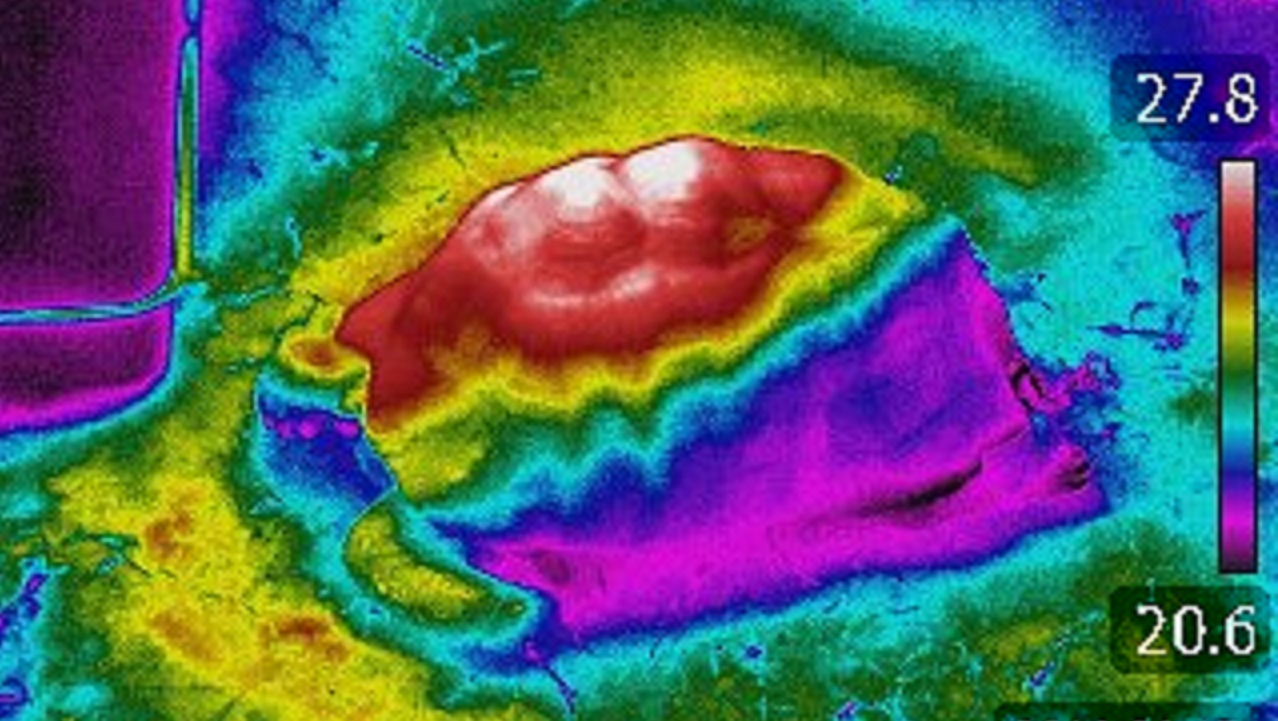 Infrared image of tortoise under heat lamp in current tortoise house. Note that the top of the shell is hot (>25°C) but the head is colder (blue indicates about 22°C).
Infrared image of tortoise under heat lamp in current tortoise house. Note that the top of the shell is hot (>25°C) but the head is colder (blue indicates about 22°C).
Project Backers
- 58Backers
- 57%Funded
- $1,222Total Donations
- $21.07Average Donation
